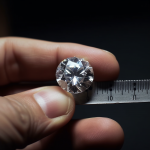Diamond Prices
Read moreDiamond Clarity Grading Chart
How are looking different types of inclusions in diamonds?
Are you wondering how inclusions look like?
View magnified pictures how are looking impurities on
this actual clarity grading chart shown by microscope and by importance of flaws
GIA defined and Identified by different blemishes on images magnified X 100 by microscope.
Recognize the visual impact and influence of spots on prices on polished diamonds.
View types of inclusions classified by categories of importance of impurities:
Grade and evaluate diamond clarity by real photographs to identify visual internal and external inclusions and blemishes.
Diamond clarity grading is an opinion, not a mathematic scientific fact!
Inclusions are crystals or structural imperfections such as whitish clouds, cracks, feathers, knots and black spots.
The quantity, size, color, location, orientation and visibility of inclusions can affect the clarity by SI3 and piqué.
Most inclusions in diamonds do not affect the brilliance.
Diamonds with highest clarity grades are more expensive, because much more rare.
Clarity grading by images, photo's made by microscope.
Microscopic lighted pictures for diamond grader study purposes only!
Real size of a one carat diamond

Internally Flawless (IF) no inclusions inside. also named Loupe Clean (LC):
There are very few diamonds that are Internally Flawless
Flawless, no inclusions inside and no imperfections outside:
There are extremely rare Internally and Externally Flawless diamonds, named (FL)
This 1.00 Carat Diamond image is magnified by 100 by microscope
Real size of a one carat VVS1 clarity diamond

VVS1 Clarity
Very Very Small inclusions 1st degree.
Extremely difficult to detect even by experienced grader by loupe.
This 1.00 Carat Diamond image is amplified x 100 by microscope
Real size of a one carat VVS2 clarity
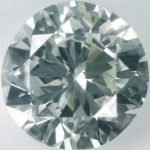
VVS2 Clarity
Very Very Small inclusions 2nd degree.
Extremely difficult to detect even by experienced grader by loupe.
This image is magnified by 100
One carat VS1 real size

VS1 Clarity
Very Small inclusions 1st degree.
Difficult to detect even by experienced grader by loupe.
This 1 Carat Diamond image is magnified by 100
Real size of a VS2 diamond

VS2 Clarity
Very Small inclusions 2nd degree.
Difficult to detect even by experienced grader by loupe.
This 1.00 Carat picture is enlarged x 100
Real size of a SI1 clarity in one carat.

SI1 Clarity
Small Inclusions 1st degree. Eye Clean.
Detectable by trained eye by loupe
This 1 Carat Diamond photo is enlarged by hundred
Real size of a one carat diamond in SI2 clarity
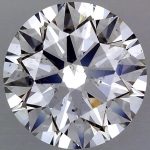
SI2 Clarity
Small Inclusions 2nd degree.
Easily detectable by loupe – See the black spots
This 1 Carat Diamond photo is enlarged by microscope x 100
Real size of a one carat
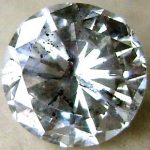
SI3 Clarity
Small Inclusions 3rth degree.
Easily detectable by loupe – See the black spots + cracks all over
This 1.00 Carat Diamond image is magnified X 100
The Real size is 40 times smaller

I1 / P1 Clarity
Important Inclusions, flaws / spots 1st degree affecting the clarity. Detectable by naked eye.
Also named Pique 1
This 1.00 Carat Diamond image is magnified x 40
We do advise not to buy!
Real size
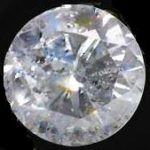
I2 / P2 Clarity
Very important Inclusions, flaws / spots 2nd degree. Easily detectable by naked eye. Also named Pique 2
This 1.00 Carat Diamond
image is enlarged x 40
We do advise not to buy!
Real size

I3 / P3 Clarity
Full of important Inclusions, flaws / spots 3 rth degree. Easily detectable by naked eye.
Also named Pique 3
This 1 Carat Diamond image is x 40 magnified
Do not buy!
Diamond grading chart
GIA Diamond Grading
Laboratories uses a microscope to measure the importance of the spots in microns.
The following clarity grades are called Loupe Clean, Cleanish and Piqué,
determined by the size, position, brightness and quantity of internal and external inclusions / flaws / spots on scale.
LC / IF – a diamond is called Loupe Clean and Internally Flawless when no internal spots are visible magnifying x 10 – Loupe Clean.
VVS1 – Diamond with Very Very Small inclusions / spots 1st degree. Extremely difficult to detect even by experienced grader with a loupe magnifying x 10 Loupe Clean.
VVS2 – Diamond with Very Very Small inclusions and spots of 2nd degree. Extremely difficult to detect even by experienced grader with a loupe magnifying x 10 Loupe Clean.
VS1 – Diamond with Very Small inclusions / flaws / spots 1st degree. Difficult to detect even by experienced grader with a loupe magnifying x 10 Loupe Clean.
VS2 – Diamond with Very Small inclusions / flaws / spots 2nd degree. Difficult to detect even by experienced grader with a loupe magnifying x 10 Loupe Clean.
SI1 – Diamond with Small Inclusions / flaws / spots 1st degree. Eye Clean. Detectable with a loupe magnifying x 10
SI2 / SI3 – Diamond with Small Inclusions / flaws / spots 2nd degree and 3 nth degree. Detectable by nacked eye
I1 / P1 – Diamond with Inclusions, flaws / spots 1st degree. Visible by nacked eye, spots / flaws Detectable by naked eye. Also named Pique 1
I2 / P2 – Diamond with Inclusions : flaws / spots 2nd degree. Visible by naked eye. Also named Pique 2
I3 / P3 – Diamond with Inclusions / flaws 3rd degree. Obvious inclusions, / spots easily visible by naked eye affecting transparency and brightness. Also named Piqué 3

